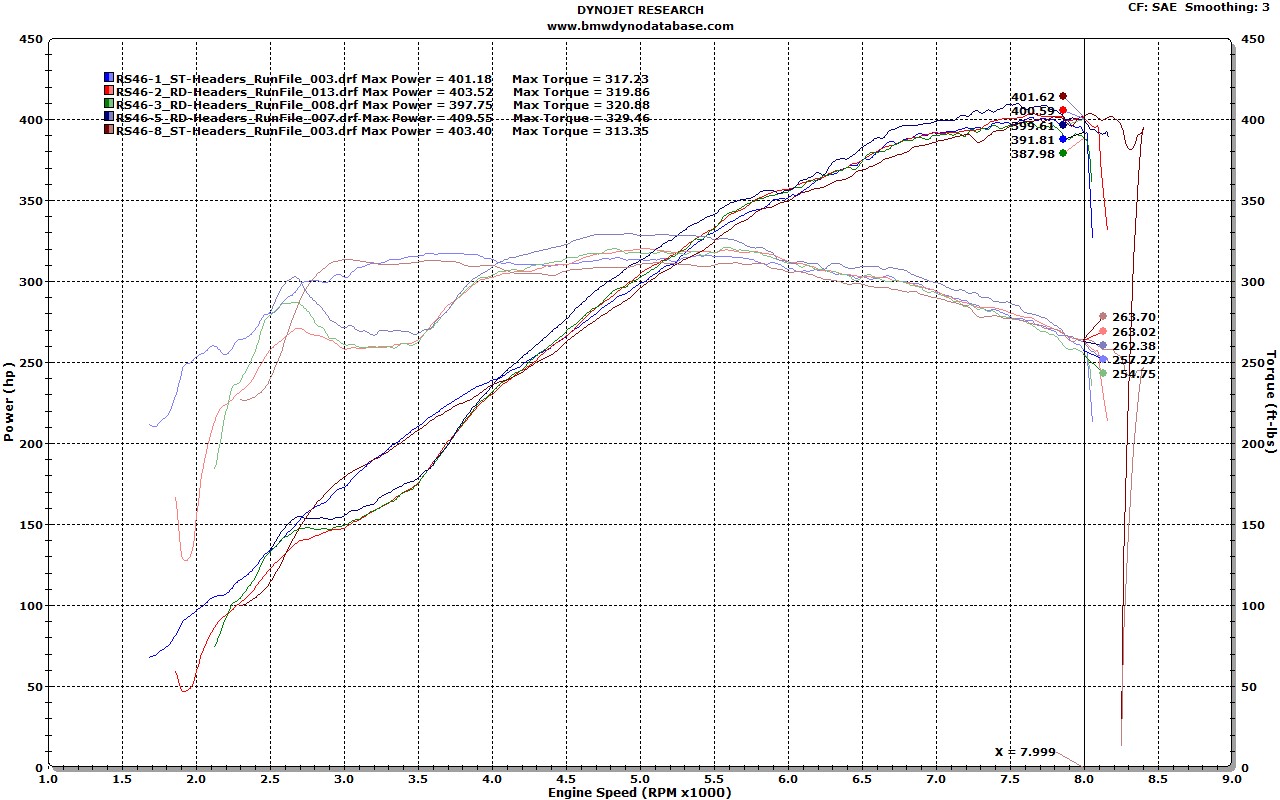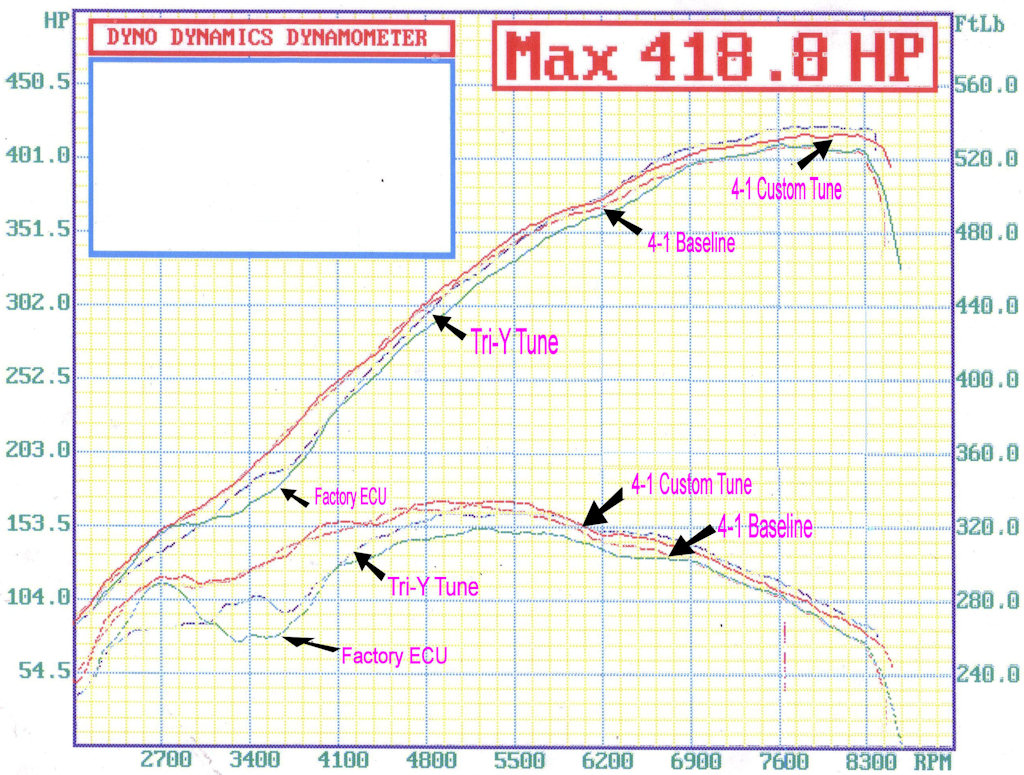I wanted to see if there was any real reason to get excited about these types of headers, so I asked PG if he had any dyno charts that might shed some light on the subject one way or the other. Here's what he came up with.
-----
The original factory headers are 40mm primary tubes. RD Sport experimented with two different designs of larger tube headers. Headers were produced in 42mm and 44mm primary tube configurations. A Tri-Y collector and 4:1 collector were also tested. The dyno chart immediately below will show only stock and Tri-Y configurations. Another dyno chart later on will show the comparison between Tri-Y and 4:1 collectors with and without ECU tuning. In the first dyno chart, there are five different RD Sport stroker motors: two with stock headers, and three with larger diameter Tri-Y headers.

The five motors and their modifications are as follows:
- RS46-1: RD Sport "stroker" motor, stock headers, 200-Cell HF cats, RD Sport exhaust, underdrive pulley, stock ECU. 401whp, 317wtq.
- RS46-2: RD Sport "stroker" motor, 42mm Tri-Y headers, 200-Cell HF cats, RD Sport exhaust, underdrive pulley, stock ECU. 404whp, 320wtq.
- RS46-3: RD Sport "stroker" motor, 44mm Tri-Y headers, 200-Cell HF cats, RD Sport exhaust, underdrive pulley, stock ECU. 398whp, 321wtq.
- RS46-5: RD Sport "stroker" motor, 42mm Tri-Y headers, 200-Cell HF cats, RD Sport exhaust, underdrive pulley, Active Autowerke ECU. 410whp, 329wtq.
- RS46-8: RD Sport "stroker" motor, stock headers, Akrapovic Evolution exhaust, underdrive pulley, RD Sport ECU. 403whp, 313wtq.
There's a few things that really jump out at me from this dyno chart.
- Changing the header design to Tri-Y has a significant negative effect without proper ECU tuning. From looking at these charts, you can see a significant torque dip between 2600-4000 RPMs on all cars with the Tri-Y header design. Moral to the story, don't mess with the header design unless you really know what you're doing.
- There's no significant performance difference between the stock 40mm headers and larger 42mm headers, although the 42mm headers do seem to produce a tiny amount more torque.
- There seems to be a negative performance impact jumping from 40mm headers (or 42mm) up to 44mm headers. Moral to the story: bigger isn't better, sometimes it's worse.
"RS46-5" continued to develop the ECU tuning for the Tri-Y and 4:1 headers. This car was delivered to a well known SoCal BMW tuner. The goal was to use ECU tuning to elimitate the torque dip on the Tri-Y header design. So RS46-5 picks up with the dyno chart below, almost exactly where the dyno chart above left off. Before ECU tuning began, RS46-5 was flashed back to stock, then delivered for ECU tuning.
There are four different graphs on the dyno chart below:
- "Factory ECU" is the baseline for RS46-5. This is where tuning started for the Tri-Y headers.
- "Tri-Y Tune" is the best tuned version of RS46-5.
- "4-1" Baseline picks up where "Tri-Y Tune" leaves off. The only difference is the replacement of the Tri-Y collector with the 4:1 collector.
- "4-1 Custom Tune" was the best tuned version of the 42mm headers with 4:1 collector.

Here's what jumps out at me from this chart:
- No matter how many attempts were made, the ECU tuning was not able to remove the torque dip caused by the Tri-Y collector of the headers.
- The final ECU tuning of the Tri-Y actually had less torque below 3000 RPMs than before ECU tuning.
- Changing the collector from Tri-Y to 4:1 immediately elimited the torque dip. This tells me that header configuration is critical, and some designs can actually significantly hurt performance.
Based on what I saw with these large tube headers, I would want to know the following before making any header decisions.
- What is the primary tube size? 42mm seems to work and produces a tiny amount of torque, but doesn't produce any real power over stock. 44mm seems too big and appears to lose power.
- Is ECU tuning required to run these headers? We've seen what happens both with and without ECU tuning with larger tube headers. The headers themselves seem to disrupt many of the power characteristics of the motor, and the charts above would indicate that some level of ECU tuning will be required.
- If ECU tuning is required, who is going to do it? If it is, I'd want to know if the tuner is capable, as it appears that not all tuners are.